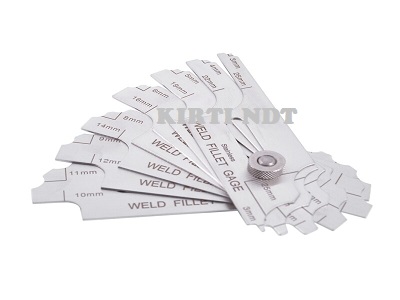How to Attain Precision with Gauge Fillet Welds in Your Tasks
Fillet Weld Style Approaches: Maximizing Joint Efficiency and Appearance for Structural Integrity
In the realm of architectural engineering and construction, the relevance of fillet weld style methods can not be overemphasized. These strategies play a critical duty in not just making certain the performance and architectural honesty of joints yet also in improving the total appearances of the finished product. By diligently considering aspects such as weld account optimization, product choice, joint prep work strategies, welding process performance, and visual enhancement producers, engineers and techniques can attain an unified equilibrium in between performance and look in their bonded structures. The fusion of these aspects not only leads to robust joints but also boosts the aesthetic allure of the last item.
Weld Profile Optimization


Achieving an optimal weld account involves a careful consideration of factors such as material density, joint configuration, welding position, and desired welding rate. Additionally, the choice of ideal welding criteria, such as voltage, present, and take a trip speed, is fundamental in regulating the shape and dimensions of the fillet weld. Using innovative welding methods, such as pulse welding or robot welding, can even more improve the weld account to meet specific style requirements and high quality criteria.
Fundamentally, weld account optimization is a basic element of fillet weld design that straight influences the overall efficiency and integrity of welded joints in architectural applications.
Product Selection Factors To Consider
When taking into consideration material choice for fillet weld layout, the compatibility of the base steels is a critical aspect influencing the structural honesty of the joint. It is necessary to pick products that not just bonded together effectively but also possess similar mechanical residential or commercial properties to make sure the load is uniformly distributed between the weld and the base metals. Welding products with greatly different buildings can lead to concerns such as anxiety concentrations, early joint failing, or breaking.
Additionally, the setting in which the bonded framework will certainly run have to be considered when selecting materials. Aspects like rust resistance, temperature level fluctuations, and exposure to chemicals can all affect the longevity and efficiency of the weld joint. By choosing products that are ideal for the intended application and atmosphere, the total durability and reliability of the bonded joint can be visit site dramatically enhanced.
For that reason, extensive consideration of product compatibility and ecological variables is vital in guaranteeing the weld joint's toughness, resilience, and total architectural stability.

Joint Preparation Methods
Considering the crucial duty product selection plays in ensuring the structural honesty of fillet weld joints, it is important to apply precise joint prep work techniques that maximize the link in between the base steels. Joint prep work is a crucial action that straight affects the quality and strength of the weld.
Additionally, appropriate fit-up of the joint is vital to make sure uniform circulation of the welding product and protect against issues like incomplete infiltration or too much build-up. Beveling the sides of the base metals can produce a groove that enables deeper weld infiltration and a more powerful bond. Furthermore, tack welding the elements in position before the final weld helps maintain alignment and decreases distortion throughout the welding procedure. By thoroughly complying with these joint preparation strategies, welders can enhance the total performance and aesthetic appeals of fillet weld joints while making certain architectural sturdiness.
Welding Refine Performance
Effective welding processes are important for achieving ideal efficiency and quality in fillet weld fabrication. One crucial aspect of enhancing welding procedure effectiveness is picking the suitable welding technique. Elements such as material kind, joint layout, and welding placement should be very carefully considered to determine the most suitable method. For instance, procedures like gas steel arc welding (GMAW) and flux-cored arc welding (FCAW) are typically utilized for fillet welds as a result of their convenience and speed (Gauge Fillet Weld).
Regular calibration of welding devices, examination of consumables, and upkeep of welding torches can prevent downtime and rework, inevitably conserving time and sources. Well-trained welders are much more adept at readjusting specifications, troubleshooting concerns, and maintaining consistent weld high quality.
Visual Enhancement Techniques
To maximize the high quality of fillet weld manufacture, implementing visual improvement techniques can play an important duty in guaranteeing accuracy and precision during the welding process. Aesthetic aids such as weld size determines and multiplying lenses can assist in assessing weld accounts and dimensions precisely. By incorporating these aesthetic improvement techniques right into the welding process, welders can attain not only structurally audio fillet welds yet likewise aesthetically appealing results that satisfy market requirements.

Conclusion
Finally, optimizing fillet weld layout involves cautious consideration of weld profile, material choice, joint preparation, welding process effectiveness, and visual enhancement techniques. By implementing these approaches, architectural integrity can be enhanced while likewise accomplishing visual appeal. It is necessary to prioritize both performance and looks in fillet weld layout to make certain the overall high quality and longevity of the joint.
By meticulously thinking about elements such as Recommended Reading weld profile optimization, material selection, joint prep work strategies, welding procedure efficiency, and aesthetic improvement producers, engineers and approaches can achieve a get more harmonious balance between functionality and appearance in their welded structures.In the realm of fillet weld style, optimizing the weld account plays an important duty in ensuring architectural integrity and performance. The weld account, which consists of the dimension and form of the weld cross-section, directly influences the distribution of stress and load-bearing capability within the joint. It is vital to choose materials that not only weld together effectively but additionally have similar mechanical residential or commercial properties to make certain the load is uniformly dispersed between the base and the weld steels - Gauge Fillet Weld.In final thought, optimizing fillet weld layout entails mindful factor to consider of weld account, product choice, joint preparation, welding procedure effectiveness, and aesthetic improvement approaches